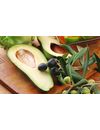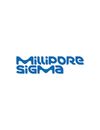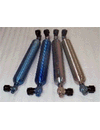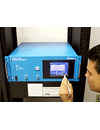
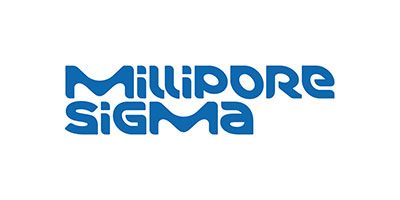
Sigma-Aldrich
8 Applications found
Sigma-Aldrich applications
QuEChERS (Quick, Easy, Cheap, Effective, Rugged, Safe) is a very popular method for the extraction and cleanup of fruit and vegetable samples for pesticide residue analysis.2-4 The extraction step uses acetonitrile and a salting out effect (with MgSO4). Cleanup is then accomplished using dispersive SPE (dSPE) followed by a centrifuge step prior to analysis.
This application shows the clean-up and analysis using Supel™ QuE Z-Sep+ QuEChERS and an SLB®-5ms GC column.
Highly pigmented foods, such as spinach, require cleanup prior to analysis for pesticide residues. A dual-layer SPE tube containing graphitized carbon and aminopropyl on silica (NH2) is often used because; Carbon removes pigments and sterols and NH2 removes fatty acids, polar pigments, organic acids, and sugars. Removing these matrix materials reduces interferences that can lead to ion suppression in LC-MS, inlet contamination in GC-MS, and column contamination for both techniques.
Our Supel Sphere Carbon/NH2 SPE tube uses spherical materials for both the carbon and NH2 layers, providing fast, more consistent flows compared to tubes containing granular material. This allows gravity elution (instead of vacuum elution) to be applied to Supel Sphere tubes, resulting in more contact time between extracts and sorbents.
Andreas Breidbach [1] and Wolfgang Brodacz [2,3,4] developed a new GC-MS method using fully 13C isotopelabelled analogues of T-2 toxin and HT-2 toxin that allows for the detection of these toxins at concentrations as low as 2–5 ppb.
Mycotoxins are a diverse group comprised of hundreds of secondary metabolic products of various fungal species. Several show marked toxicity in humans. Contamination of the food supply with mycotoxins is increasingly prevalent, and can occur during growth, harvest, transportation, processing or storage. Techniques to reduce mycotoxin concentration after contamination are expensive, unreliable and sometimes reversible. Therefore, the removal of contaminated products from the food chain is a primary means of eliminating human exposure. The sensitive and accurate detection of very low levels of these compounds is critical to efforts to identify contaminated products. LC-MS/MS is a popular analytical technique for this purpose. This application explores using Ascentis® Express RP-Amide and Ascentis Express F5 HPLC columns to perform this analysis.
The suitability of the new cleanup sorbent, Supel QuE Z-Sep+, has been successfully demonstrated for cleanup of beef kidney matrix. It was found to effectively reduce background without significantly reducing recovery of lipophilic pesticides such as organochlorines and some pyrethroids. GC-MS full-scan data indicated Z-Sep+ was found to provide better cleanup in the form of reduced background than PSA/C18, and less interference in the GC-MS/SIM analysis of the target pesticides themselves.
Fungicide carbendazim can some times be used to combat mold on citrus fruits including oranges. Recently, low residue levels of the fungicide were reported to be present in the bulk orange juice import shipments to the USA. Because this compound can persist through processing steps and may be found in the final consumer product, many government agencies have established maximum residue limits (MRLs) to ensure the safety of their population.
Presented here is a single method, involving fast and effective QuEChERS cleanup, suitable for various orange juice matrices. The choice of PSA/C18 sorbents reduced interferences, resulting in greater recoveries and less ion-suppression. Because the QuEChERS method is fast, it only adds a few minutes to the
sample preparation procedure. Sample processing using QuEChERS with PSA/C18 allows analysts to accurately process various matrices in a single workflow, with very little additional sample preparation time.
An application was developed to demonstrate increased pigment removal for the analysis of pesticides, using Supel™ QuE Z-Sep/C18 QuEChERS and an Ascentis® Express C18 HPLC Column. The improved cleanup can decrease column and instrument fouling, leading to extended LC column lifetime and reduced instrument downtime.
A group of 30 compounds was selected, representing pesticides, acaricides, insecticides, and fungicides. These samples were analyzed using Supel™ QuE QuEChERS and an Ascentis® Express RP-Amide HPLC Column.

